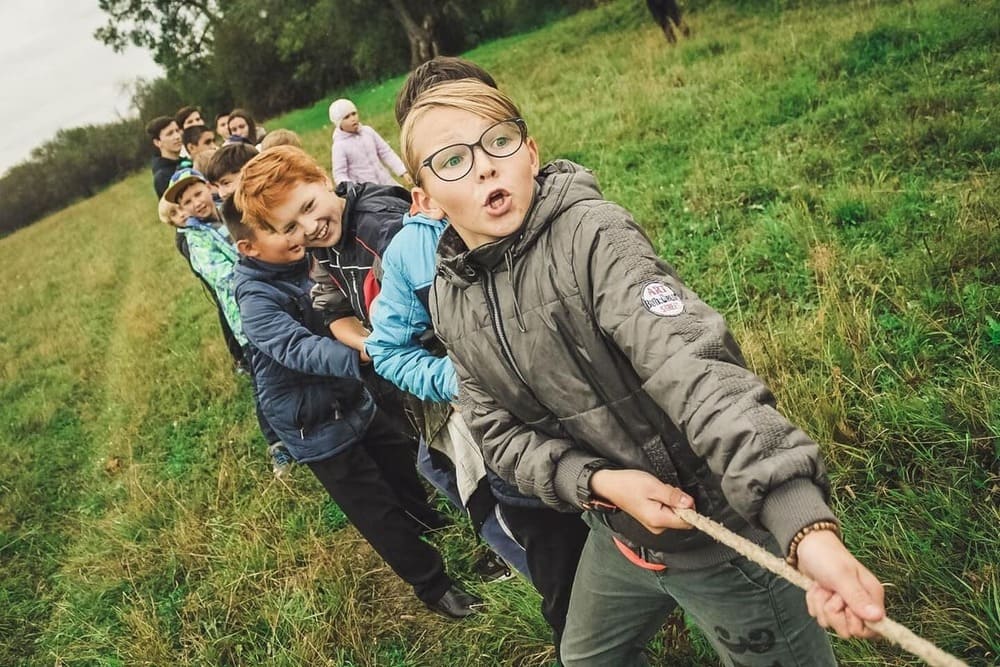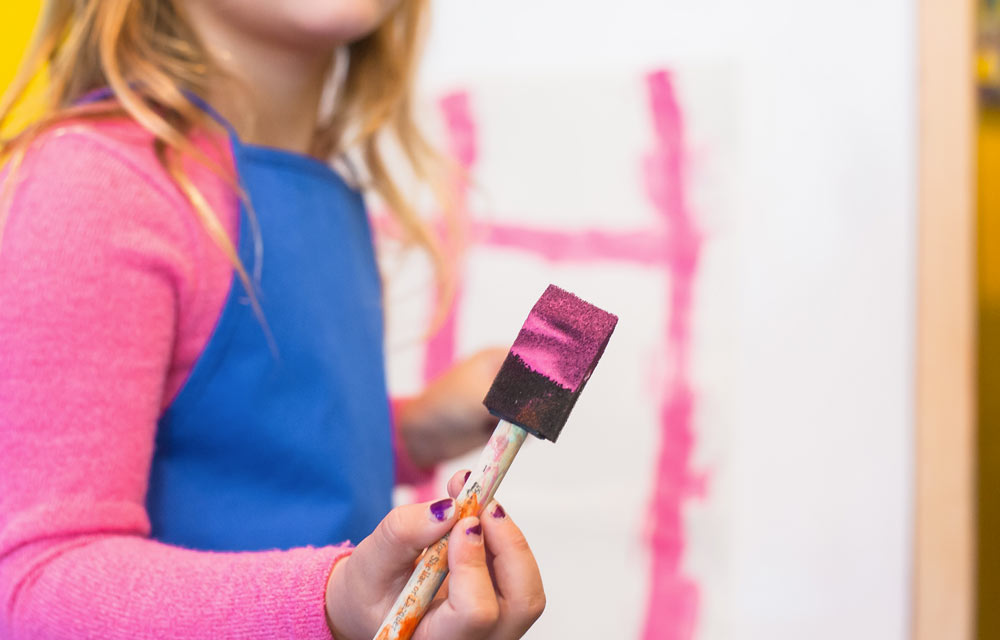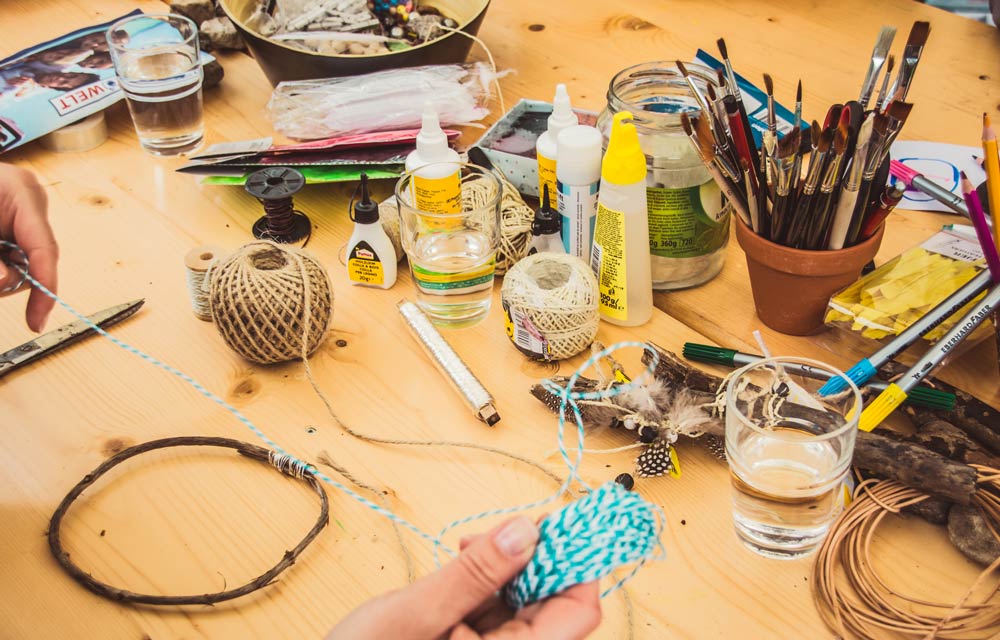There are many types of children’s events, but to make them successful, there are a few key elements you should always keep in mind.
Follow the tips and ideas in this article to organise a well-planned children’s event that leaves both kids and parents eager for the next one. Summary
1. Getting started with organising your children’s event
Organising an event for children requires detailed planning, just like any other event, but the audience’s specific characteristics must be taken into account in every detail of the event’s organising. Whether it’s a birthday party, an educational trip or a cultural activity, organising a children’s event requires just as much preparation as a major festival or a music show. The difference? The audience. Children have their own pace, interests and ways of experiencing events. Every detail should be considered from their perspective, literally and figuratively.
Whether you’re planning an afternoon in a park, a family visit to the zoo, a workshop in a museum or an event at an iconic venue like a theatre or a science centre, the goal remains the same: to create an engaging, safe and curiosity-sparking environment.
Start with a clear plan: location, activities, duration, number of children, whether parents will attend, and the required supervision. A well-organised event should appeal to children while reassuring adults. After all, a great event is one that the whole family enjoys together, from toddlers to older siblings.
Many local initiatives encourage these shared experiences: exhibitions, creative workshops, theatre classes, live performances or adventure trails by the seaside. Whatever you choose, always design the event with children in mind but ensure that it is enjoyable for all.
a) Find a theme or common thread
Some children’s events naturally have a theme, particularly those tied to specific dates like Christmas or Easter. Other events, whether cultural, educational, recreational or entertainment-based, can benefit from a theme to provide structure and coherence.
A well-defined theme makes planning easier, as it guides your choice of decorations, food and even participants’ costumes. It also enhances engagement, making the event more immersive for both children and accompanying adults.
b) Choose the venue
When choosing a venue, consider the number of expected attendees. Ensure that children have enough space to move freely and safely. Outdoor events are a great option, especially in good weather.
Accessibility is another crucial factor. Make sure the venue is easy to reach by car and public transport and that it can accommodate pushchairs.
c) Choose the date
It’s important to set the event date well in advance. Consider school schedules, local events and exam periods if applicable to your audience’s age group. You could also align your event with a significant date to create a themed celebration.
d) Determine the duration
A stage show differs from a day at a holiday camp, but in general, children’s events should be kept short. At the very least, individual activities should be brief. This is particularly important for younger children, as their attention span is limited, and they should never feel forced to participate.
2. Managing registrations for your event
Before rolling out the red carpet for your event, you need to know your audience. How many children will attend? What are their ages? Will they be accompanied by adults? Are there any dietary restrictions to consider?
If your event requires payment, whether it’s a community centre workshop, an outdoor cinema screening or an animal encounter, you’ll also need an efficient way to handle registrations and payments.
An online ticketing and registration solution will make this task much easier, while also simplifying the process for the responsible adults. With Weezevent, you can create an event in just a few clicks, with different sessions if necessary (e.g. for shows that are repeated at different times), collect the data you need thanks to the purchase or registration form, manage payment by card and, on the day of the event, manage access control.
3. Designing the perfect event for children
a) Food
If your event lasts several hours, food breaks are essential. Children experience events differently from adults. They need regular pauses, familiar routines and, of course, tasty treats.
Opt for simple, colourful and easy-to-eat snacks. Handheld foods like toffee apples, fruit skewers, ice cream and candy floss are always popular, reducing mess and allowing children to eat while playing.
If your event takes place in a big city, consider an outdoor picnic or a quick snack to keep the experience smooth and enjoyable. A beautifully decorated setting, such as a garden, park or courtyard with a festival-like atmosphere, adds a special touch.
Presentation is key, especially if your event has a theme. Play around with colours, shapes and characters. Why not turn fruit into funny little faces or set up a DIY snack decoration station? Engaging children in the food preparation process turns mealtime into an activity in itself.
b) Games and activities
The first few minutes of an event can be tricky. Some children arrive earlier than others, and some may feel shy or overly excited. To create a welcoming atmosphere, prepare some free-play games or quiet activities at the entrance.
One of the keys to the success of your event is ensuring that the games and activities are well thought out according to the age range of the attendees, it’s important that you have this information in advance, either by limiting your event to a particular age range or by asking for this information on the registration form!
- Ages 1–4: Soft music, puppets and role-playing games
- Ages 5–8: Face painting, magic shows and team challenges
- Ages 9–12: Treasure hunts, art workshops, obstacle courses or even trampoline contests if space allows
If hiring an external entertainer, such as a juggler, storyteller or dancer, ensure their performance is suitable for your audience. These moments often become the highlight of the event and are among the most memorable for attendees.
c) Safety
A stimulating environment is great, but a safe environment is essential. Make sure there are no dangerous objects within reach, that spaces are well-marked and that children are always supervised by responsible adults.
Each activity should have appropriate supervision. If necessary, limit the number of participants per session to ensure better management. If your event takes place in a city or public space, consider using light barriers or ribbons to define zones and control crowd movement.
Also, keep a first aid kit nearby, and if possible, take out public liability insurance. Small precautions can make a big difference.
d) Goody bags
Party bags are often the final touch, eagerly awaited by the children. A party bag allows them to take home a little souvenir, like sweets, stickers, toys, a card or a personalised message. The goal is to prolong the magic of the event after they leave.
This is also a great opportunity to include a little nod to the day’s theme or story. Some organisers even add a mini activity for children to do at home or a discount code for future events.
These thoughtful touches strengthen the bond with families and encourage repeat attendance. A happy child usually means happy parents and enthusiastic word-of-mouth recommendations.
4. Communicating about your children’s event
You need to promote your event effectively to attract participants. When it comes to children’s events, make sure you publicise it in places where children and parents are: nurseries, schools, after-school centres, clothing shops, toy stores, gyms, supermarkets and of course, social media.
Communication should also continue after registrations. Keep parents informed to reassure them and provide essential information: the event programme, whether they should accompany their children, the schedule, what to bring and so on. Take the opportunity to introduce yourself and your event staff. The more parents know about your event, the more confident they will feel entrusting their children to you.
After the event, keep in touch with the parents. For instance, you can send them the video of the song that was a hit with the children and thank them for attending your event. From there, you can build a relationship and invite them to your future events.
For all this communication, don’t hesitate to use a mailing and CRM solution in order to create segments (e.g. by age group, or by events they’ve already attended) and communicate more effectively.
5. Don’t forget the adults
Would you like the adults accompanying the children to take part in the event with them? Do you want them to be close by, but not participate in the children’s activities? Or would you like them to leave the children for the duration of the event?
Whichever option you choose, it’s essential that you communicate it to parents in advance. While it might be a mere detail for you, it can create unnecessary frustration and friction if it’s misunderstood. Design your event accordingly: if you want the adults to be involved, you can offer an event with no phones so that they can spend quality time with their children. If you’d prefer the adults to stay on the sidelines, think about what you can offer them, such as a quiet adults-only area with some refreshments.
You now have the basics for organising a great event at your fingertips!
With Weezevent’s ticketing and registration solutions, access control, and our mailing and CRM tool, organising a children’s event is … child’s play!



